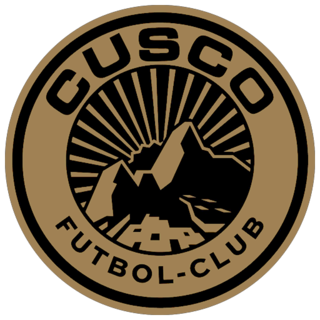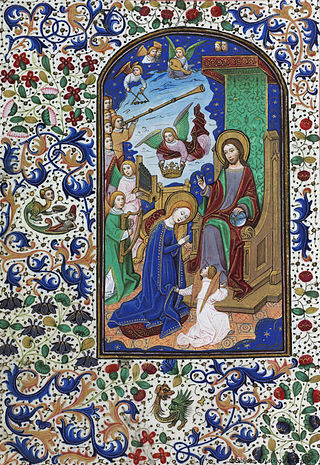This article contains information about the literary events and publications of 1501.

Garcilaso de la Vega, KOS was a Spanish soldier and poet. Although not the first or the only one to do so, he was the most influential poet to introduce Italian Renaissance verse forms, poetic techniques, and themes to Spain. He was well known in poetic circles during his lifetime, and his poetry has continued to be popular without interruption until the present. His poetry was published posthumously by Juan Boscán in 1543, and it has been the subject of several annotated editions, the first and most famous of which appeared in 1574.
Joan Boscà i Almogàver, was a Spanish poet who incorporated hendecasyllable verses into Spanish.

Inca Garcilaso de la Vega, born Gómez Suárez de Figueroa and known as El Inca, was a chronicler and writer born in the Viceroyalty of Peru. Sailing to Spain at 21, he was educated informally there, where he lived and worked the rest of his life. The natural son of a Spanish conquistador and an Inca noblewoman born in the early years of the conquest, he is known primarily for his chronicles of Inca history, culture, and society. His work was widely read in Europe, influential and well received. It was the first literature by an author born in the Americas to enter the western canon.
De la Vega is a surname in the Spanish language, most of its bearers belonging to the nobility. It means "of the meadow" and may refer to:

Estadio Inca Garcilaso de la Vega, commonly known as Estadio Garcilaso, is Cusco's principal stadium and the home venue of the local football team Cienciano. The stadium was named after the Peruvian mestizo Inca Garcilaso de la Vega and inaugurated in 1958, with an initial capacity of 30,000. It is owned by the Instituto Peruano del Deporte.

Fernando de Herrera (~1534–1597), called "El Divino", was a 16th-century Spanish poet and man of letters. He was born in Seville. Much of what is known about him comes from Libro de descripción de verdaderos retratos de illustres y memorables varones (1599) by Francisco Pacheco.

The Comentarios Reales de los Incas is a book written by Inca Garcilaso de la Vega, the first published mestizo writer of colonial Andean South America. The Comentarios Reales de los Incas is considered by most to be the unquestioned masterpiece of Inca Garcilaso de la Vega, born of the first generation after the Spanish conquest.
Spanish Renaissance literature is the literature written in Spain during the Spanish Renaissance during the 15th and 16th centuries..
Promaucae, also spelled as Promaucas or Purumaucas, were an indigenous pre-Columbian Mapuche tribal group that lived in the present territory of Chile, south of the Maipo River basin of Santiago, Chile and the Itata River. Those to the north were called Quillotanes and Mapochoes by the Spanish colonists). They spoke Mapudungun, like the Moluche to the south, and were part of the Picunche tribe that lived north of the Itata River.
Nationality words link to articles with information on the nation's poetry or literature.

Deportivo Garcilaso is a Peruvian professional football club, based in the city of Cusco. Founded in 1957, the club competes in the Peruvian Primera División after being promoted by winning the 2022 Copa Perú. They are nicknamed, El Garci. The club plays their home games at Estadio Garcilaso, which they share with city rivals Cienciano and Cusco FC. The stadium has a capacity of 45,000.

Cusco Fútbol Club is a professional Peruvian football club based in the city of Cusco, that competes in the Liga 1, the top flight of Peruvian football. It was founded on 28 August 2008 as Real Garcilaso, changing their name to Cusco FC in 2019. The teams home stadium is Estadio Inca Garcilaso de la Vega, which is shares with city rivals Cienciano and Deportivo Garcilaso.
El Garcilasismo is one of the main themes of Spanish post-civil-war poetry whose followers met in Café Gijón, Madrid.

Garci Lasso Ruiz de la Vega was a Spanish noble from Cantabria and one of the pillars in the history of the prominent contemporary House of Garci Lasso de la Vega or Garcilasco de la Vega. As the eldest son Garci Lasso Ruiz de la Vega succeeded his father, Garci Lasso de la Vega II, as the head of his household.

The House de la Vega, Laso de la Vega or Lasso de la Vega is a Spanish noble line from the Kingdom of Castile. The family origins lie in the areas now known as Torrelavega which was established in the Middle Ages. The House of de la Vega was one of the most important families in the territory, which now makes up Cantabria, and they dominated a large amount of the terrain and property between the Torre de la Vega and the Castillo de Argüeso.
Garcilaso de la Vega may refer to:
Sebastián Garcilaso de la Vega y Vargas was a Spanish conquistador and colonial official. He fathered a son, the mestizo chronicler Garcilaso de la Vega, with the Inca princess Isabel Chimpu Occlo.

The Book of Hours of Leonor de la Vega is a codex of illuminated manuscript on vellum by Willem Vrelant. It is in the National Library of Spain (Vitr.24-2). The pages are 19 x 13 centimeters in size.

The Inca Garcilaso de la Vega University (UIGV) is a private university located in the city of Lima, Peru. Founded on December 21, 1964, during the first government of President Fernando Belaúnde Terry. It is currently in the period of cessation of activities due to the fact that the Superintendencia Nacional de Educación Superior Universitaria (SUNEDU) denied his licensing.










